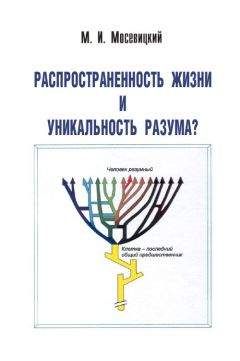Назаретян А. П. (2001) Цивилизационные кризисы в контексте универсальной истории. М.: ПЕР СЭ.
Опарин А. И. (1966) Возникновение и начальное развитие жизни. М.: Медицина.
Опарин А. И. (1975) Эволюция концепций происхождения жизни от 1924 года до 1974 года. Изв. АН СССР, 1, 5―10.
Пенроуз Р. (2005) Тени разума. Москва―Ижевск.
Прозоров А. А. (2000) Горизонтальный перенос генов у бактерий. Усп. совр. биол., 120, 515―528.
Редже Т. (1985) Этюды о Вселенной. М.: Мир.
Рудавская В. А. (1972) О сходстве микроструктур метеорита Оргей (Orgueil) и микрообразований из раннепалеозойских отложений Восточной Сибири. Докл. АН СССР, 202, 675―676.
Стил Э. и др. (2002) Что, если Ламарк прав? Иммуногенетика и эволюция. М.: Наука.
Суходолец В. А. (2003) Генетическая теория вертикальной эволюции. Москва.
Хрянина Л. П. (1987) Метеоритные кратеры на Земле. М.: Недра.
Хуснутдинова Э. К. и Лимборская С. А. (2005) Этногеномика. В сб. fiГеномика ― медицинеfl. Ред. Иванов В. И. и Киселев Л. Л. М.: Академкнига.
Шкловский И. С. (1976) О возможной уникальности разумной жизни во Вселенной. Усп. философии, 9, 80―93.
Шредингер Э. (1972) Что такое жизнь? М.: Атомиздат.
Энгельгардт В. А. (1984) Познание явлений жизни. М.: Наука.
Adcock G. J. et al. (2001) Mitochondrial DNA sequences in ancient Australians: Implications for modern human origins. Proc. Natl. Acad. Sci. USA, 98, 537―542.
Aguilar D. et al. (2004) Analysis of phenetic trees based on metabolic capabilities across the three domains of life. J. Mol. Biol., 340, 491―512.
Alberts B. M. (1984) The DNA enzymology of protein machines. Cold Spring Harb Symp Quant Biol., 59, 1―12.
Alemseged Z. (2003) An integrated approach to taphonomy and faunal change in the Shungura formation (Ethiopia) and its implication for hominid evolution. J. Hum. Evol., 44, 451―478.
Allwood A. C. et al. (2006) Stromatolite reef from the Early Archaean era of Australia. Nature, 441, 714―718.
Alroy J. (2003) Cenozoic bolide impacts and biotic change in North American mammals. Astrobiology, 3, 119―132.
Altermann W. and Kazmierczak J. (2003) Archean microfossils: a reappraisal of early life on Earth. Res. Microbiol., 154, 611―617.
Alvarez L. W. et al. (1980) Extraterrestrial cause for the Cretaceous-Tertiary extinction. Science, 208, 1095―1108.
Alvarez L. W. (1987) Mass extinctions caused by large bolide impacts. Phys. Today, 40, 24―33.
Ambrose S. H. (1998) Late Pleistocene human population bottlenecks, volcanic winter, and differentiation of modern humans. J. Hum. Evol., 34, 623―651.
Anders E. (1989) Pre-biotic organic matter from comets and asteroids. Nature, 342, 255―257.
Anders E. et al. (1996) Evaluating the evidence for part life on Mars (Дискуссия). Science, 274, 2119―2125.
Andersson J. O. et al. (2005) Gene transfers from nanoarchaeota to an ancestor of Diplomonads and Parabasalids. Mol. Biol. Evol. 22, 85―90.
Antуn S. C. (2002) Evolutionary significance of cranial variation in Asian Homo erectus. Am. J. Phys. Anthropol., 118, 301―323.
Antunez-de-Mayolo G. et al. (2002) Phylogenetics of worldwide human populations as determined by polymorphic Alu insertions. Electrophoresis, 23, 3346―3356.
Aravind L. et al. (2000) Holliday junction resolvases and related nucleases: identification of new families? phyletic distribution and evolutionary trajectories. Nucleic Acids Res., 28, 3417―3432.
Arbiza L. et al. (2006) Positive selection, relaxation, and acceleration in the evolution of the human and chimp genome. PLoS Comput. Biol., 2, e38.
Archibald J. D. et al. (2001) Late Cretaceous relatives of rabbits, rodents, and other extant eutherian mammals. Nature, 414, 62―65.
Argue D. et al. (2006) Homo floresiensis: microcephalic, pygmoid, Australopithecus, or Homo? J. Hum. Evol., 51, 360―374.
Arsuaga J. L. et al. (2002) The Gravettian occipital bone from the site of Malladetes (Barx, Valencia, Spain). J. Hum. Evol., 43, 381―393.
Arzarello M. et al. (2007) Evidence of earliest human occurrence in Europe: the site of Pirro Nord (Southern Italy). Naturwissenschaften, 94, 107―112.
Asphaug E. et al. (2006) Hit-and-run planetary collisions. Nature, 439,155―160.
Avery O. T. et al. (1944) Studies on the chemical nature of the substance including transformation of pneumococcal types. Induction of transformation by a desoxyribonucleic acid fraction isolated from pneumococcus type III. J. Exp. Med., 79, 137―145.
Awramik S. M. (1992) The oldest records of photosynthesis. Photosynth. Res., 33, 75―89.
Ayala F. J. and Escalante A. A. (1996) The evolution of human populations: a molecular perspective. Mol. Phylogenet. Evol., 5, 188―201.
Bakewell M. A. et al. (2007) More genes underwent positive selection in chimpanzee evolution than in human evolution. Proc. Natl. Acad. Sci. USA, 104, 7489―7494.
Bada J. L. et al. (1994) Impact melting of frozen oceans on the early Earth: implications for the origin of life. Proc. Natl. Acad. Sci. USA, 91, 1248―1250.
Bada J. L. (1997) Extraterrestrial Handedness? Science, 275, 942―943.
Bada J. L. and Lazcano A. (2002) Some like it hot, but not the first biomolecules.
Science, 296, 1982―1983.
Bada et al. (2007) Debating evidence for the origin of life on Earth. Science, 315, 937―939.
Baker J. et al. (2005) Early planetesimal melting from an age of 4.5662 Gyr for differentiated meteorites. Nature, 436, 1127―1131.
Banaclocha M. A. (2007) Neuromagnetic dialogue between neuronal minicolumns and astroglial network: a new approach for memory and cerebral computation. Brain Res. Bull., 73, 21―27.
Baldauf S. L. et al. (1996) The root of the universal tree and the origin of eukaryotes based on elongation factor phylogeny. Proc. Natl. Acad. Sci. USA., 93, 7749―7754.
Balter M. (2005) Are human genes still evolving? Brain genes show signs of selection. Science, 309, 1662―1663.
Baltscheffsky H. and Baltscheffsky M. (1994) Molecular origin and evolution of early biological energy conversion. In: Early life on the Earth. Nobel Symposium № 84 (New York, Columbia), pp. 81―90.
Bapteste E. et al. (2004) Phylogenetic reconstruction and lateral gene transfer. Trends Microbiol., 12, 406―411.
Barghoorn E. S. (1971). The oldest fossils. Sci. Amer., 224, 30―42.
Basu A. R. et al. (2003) Chondritic meteorite fragments associated with the Permian-Triassic boundary in Antarctica. Science, 302, 1314―1316.
Batzer M. A. et al. (1994) African origin of human-specific polymorphic Alu insertions. Proc. Natl. Acad. Sci. USA, 91, 12288―12292.
Beck F. and Eccles J.C. (1992) Quantum aspects of brain activity and the role of consciousness. Proc. Natl. Acad. Sci. USA, 89, 11357―11361.
Becker L. et al. (2000) Fullerenes: An extraterrestrial carbon carrier phase for noble gases. Proc. Natl. Acad. Sci. USA, 97, 2979―2983.
Becker L. et al. (2001) Impact event at the Permian-Triassic boundary: evidence from extraterrestrial noble gases in fullerenes. Science, 291, 1530―1533.
Becker L. et al. (2004) Bedout: a possible end-Permian impact crater offshore of northwestern Australia. Science, 304, 1469―1476.
Benitez N. et al. (2002) Evidence for nearby supernova explosions. Phys. Rev. Lett., 88, 081101.
Benton M. J. (1995) Diversification and extinction in the history of life. Science, 268, 52―58.
Benton M. J. and Donoghue P. C. (2007) Paleontological evidence to date the tree of life. Mol. Biol. Evol., 24, 26―53.
Berezney R. and Coffey D. S. (1977) Nuclear matrix. Isolation and characterization of a framework structure from rat liver nuclei. J. Cell Biol., 73, 616―637.
Bermudez de Castro J. M. et al. (1997) A hominid from the lower Pleistocene of Atapuerca, Spain: possible ancestor to Neandertals and modern humans. Science, 276, 1392―1395.
Bernstein M. (2006) Prebiotic materials from on and off the early Earth. Philos. Trans. R. Soc. Lond. B. Biol Sci., 361, 1689―1700.
Bertram L. and Tanzi R. E. (2004) The current status of Alzheimer™s disease genetics: what do we tell the patients? Pharmacol. Res., 50, 385―396.
Birch K. (2005) Beneficence, determinism and justice: an engagement with the argument for the genetic selection of intelligence. Bi―thics, 19, 12―28.
Bjorklund M. (2003) Test for a population expansion after a drastic reduction in population size using DNA sequence data. Heredity, 91, 481―486
Blair J. E. and Hedges S. B. (2005) Molecular clocks do not support the Cambrian explosion. Mol. Biol. Evol., 22, 387―390.
Bland P. A. (2005) The impact rate on Earth. Philos. Transact. A Math. Phys. Eng. Sci., 363, 2793―2810.
Bobe R. et al. (2002) Faunal change, environmental variability and late Pliocene hominin evolution. J. Hum. Evol., 42, 475―497.
Bodiselitsch B. et al. (2005) Estimating durationand intensity of Neoproterozoic snowball glaciations from Ir anomalies. Science, 308, 239―242.
Bogerd H. P. et al. (2006) Cellular inhibitors of long interspersed element 1 and Alu retrotransposition. Proc. Natl. Acad. Sci. USA, 103, 8780―8785.
Bohler C. et al. (1995) Template switching between PNA and RNA oligonucleotides. Nature, 376, 578―581.
Bonnefille R. et al. (2004) High-resolution vegetation and climate change associated with Pliocene Australopithecus afarensis. Proc. Natl. Acad. Sci. USA, 101, 12125―12129.
Borgeson W. et al. (2002) Discussing the origin of life. Science, 298, 747―749.
Borquez E. et al. (2005) An investigation of prebiotic purine synthesis from the hydrolysis of HCN polymers. Orig. Life Evol. Biosph., 35, 79―90.
Bottke W. F. et al. (2007) An asteroid breakup 160 Myr ago as the probable source of the K/T impactor. Nature, 449, 48―53.
Bouzouggar A. et al. (2007) 82,000-year-old shell beads from North Africa and implications for the origins of modern human behavior. Proc. Natl Acad. Sci. USA, 104, 9964―9969.
Bowler J. M. et al. (2003) New ages for human occupation and climatic change at Lake Mungo, Australia. Nature, 421, 837―840.
Bouzouggar A. et al. (2007) 82,000-year-old shell beads from North Africa and implications for the origins of modern human behavior. Proc. Natl. Acad. Sci. USA, 104, 9964―9969.
Bowring S. A. et al. (1999) The tempo of mass extinction and recovery: The end-Permian example. Proc. Natl. Acad. Sci. USA, 96, 8827―8828.
Bradley J. P. et al. (1998) Epitaxial growth of nanophase magnetite in Martian meteorite Allan Hills 84001: implications for biogenic mineralization. Meteorit. Planet. Sci., 33, 765―773.
Brasier M. D. et al. (2002) Questioning the evidence for Earth™s oldest fossils. Nature, 416, 76―81.
Brasier M. et al. (2006) A fresh look at the fossil evidence for early Archaean cellular life. Philos. Trans. R. Soc. Lond. B. Biol. Sci., 361, 887―902.
Brenner S. E. (2007) Common sense for our genomes. Nature, 449, 783―784.
Bresler S. E. et al. (1981) The process of general recombination in Escherichia coli K-12: structure of intermediate products. Mol. Gen. Genet., 183, 139―143.
Brinkmann H. and Philippe H. (1999) Archaea sister group of bacteria? Indications from tree reconstruction artifacts in ancient phylogenies. Mol. Biol. Evol., 16, 817―827.
Britten R. J. (2002) Divergence between samples of chimpanzee and human DNA sequences is 5 %, counting indels. Proc. Natl. Acad. Sci USA, 99,13633―13635.
Brown M. D. et al. (1998) mtDNA haplogroup X: An ancient link between Europe/ Western Asia and North America? Am. J. Hum. Genet., 63, 1852―1861.
Brown P. et al. (2002) The flux of small near-Earth objects colliding with the Earth. Nature, 420, 294―296.
Brown P. et al. (2004) A new small-bodied hominin from the late pleistocene of Flores, Indonesia. Nature, 431, 1055―1061.
Brumm A. et al. (2006) Early stone technology on Flores and its implications for Homo floresiensis. Nature, 441, 624―628.
Brunet M. et al. (2002) A new hominid from the Upper Miocene of Chad, Central Africa. Nature, 418, 145―151.
Brunet M. et al. (2005) New material of the earliest hominid from the Upper Miocene of Chad. Nature, 434, 752―755.
Brunini A. (2006) Origin of the obliquities of the giant planets in mutual interactions in the early Solar System. Nature, 440, 1163―1165.
Busemann H. et al. (2006) Interstellar chemistry recorded in organic matter from primitive meteorites. Science, 312, 727―730.
Butler A. J. and Wolf S. L. (2007) Putting the brain on the map: use of transcranial magnetic stimulation to assess and induce cortical plasticity of upper-extremity movement. Phys. Ther., 87, 719―736.
Byerly G. R. et al. (2002) An archean impact layer from the Pilbara and Kaapvaal cratons. Science, 297, 1325―1327.
Cairns-Smith A. G. (1985) Seven clues to the origin of life. Cambridge, Cambridge Univesity Press.
Caldeira K and Rampino MR. (1990) Carrbon dioxide emissions from Deccan volcanism and a K/T boundary greenhouse effect. Geophys. Res. Lett., 1990, 17, 1299―1302.
Cann R. L. et al. (1987) Mitochondrial DNA and human evolution. Nature, 325, 31―36.
Caramelli D. at al. (2003) Evidence for a genetic discontinuity between Neandertal and 24000-year-old anatomically modern Europeans. Proc. Natl. Acad. Sci. USA, 100, 6593―6597.
Carbonell E. et al. (2005) An early pleistocene hominin mandible from Atapuerca-TD6, Spain. Proc. Natl. Acad. Sci. USA, 102, 5674―5678.
Catling D. C. (2006) Comment on fiA hydrogen-rich early Earth atmospherefl. Science, 311, 38.
Cavalier-Smith T. (2001) Obcells as proto-organisms: membrane heredity, lithophosphorylation, and the origins of the genetic code, the first cells, and photosynthesis.
J. Mol. Evol., 53, 555―595.
Cavalier-Smith T. (2002) The phagotrophic origin of eucaryotes and phylogenetic classification of protozoa. Int. J. Syst. Evol. Microbiol. 52, 297―354.
Cela-Conde C. J. and Ayala F. J. (2003) Genera of the human lineage. Proc. Natl. Acad. Sci. USA., 100, 7684―7689.
Chen J. Y. et al. (2004) Small bilaterian fossils from 40 to 55 million years before the cambrian. Science, 305, 218―22.
Cheng Z. et al. (2005) A genome-wide comparison of recent chimpanzee and human segmental duplications. Nature, 437, 88―93.
Churchill S. E. (2001) Hand morphology, manipulation, and tool use in Neandertals and early modern humans of the Near East. Proc. Natl. Acad. Sci. USA, 98, 2953―2955.
Chyba C. and Sagan C. (1992) Endogenous production, exogenous delivery and impact-shock synthesis of organic molecules: an inventory for the origins of life. Nature, 355, 125―132.





![Rick Page - Make Winning a Habit [с таблицами]](https://cdn.my-library.info/books/no-image-mybooks-club.jpg)